Perhaps 2020 was the year you’d planned to travel in a big way. The year you’d seek out secret beaches muttered about by in-the-know locals. The year you’d camp in a rainforest, see waters lit by bioluminescence and have a celebratory swig of something strong atop a wind-battered mountain.
Instead, 2020 was the year the world took a breath and travel had to reinvent itself. After the colossal earth-shake of the pandemic, what’s certain is that we’re going to be travelling more thoughtfully from hereon in. But perhaps, also, more gleefully. We will appreciate every lingering orange-slice sunset; we will feel every grain as our toes sink into the sand. We’ll think harder about how our journeys affect local communities and do more research into where our money is best spent. And while the way we travel might change, what we want from our precious holidays is, and will always remain, the same.
That’s why we’ve taken great care in selecting our top holiday destinations for 2021. On the list you’ll find a geographically diverse range of trips, from eco-cool enclaves in Central America to some of the best places in Europe. As always, we’ve listened to the surfers, the architecture buffs and the foodies; we’ve considered go-slow camping spots in Australia as well as buzzy African metropolises. With events such as the Olympic Games in Tokyo being postponed to 2021, we’ve thought about how these shifts will influence the holidays we take. There are some destinations that have been on our radar for a while – Vietnam, the Caribbean – and there are those that are reckoning with their own difficult past and, as is the case with Charleston, undergoing an important process of reinvention. As 2020 has been the year of the staycation and while UK breaks are at an all-time high, we’ve included not one but three top places to visit in the UK in 2021.https://www.youtube.com/embed/CLQ8h7HeG7c
Whatever your tastes, these are some of the best holiday destinations for 2021. Of course, the options are endless, and the world will always be there for exploring (do check FCO advice and what the latest travel quarantine rules are before travelling), but this is our pick of the spots that should not be missed.
-
21. CHANIA, CRETE, GREECEInventive cooking and isolated beaches make for a perfect island escapeWhile its Ottoman-influenced harbour and spaghetti bowl of cobble-stoned streets are delicately beautiful, Chania is packing a real punch when it comes to its food. From simple seaside cafés to exquisite Cretan fine dining, this city on the north-west coast of the Greek island has a select but quickly expanding scene that’s luring in expert palates.In the Old Town, Ginger Concept can appear a little pretentious but is a must-try – the lemon artichoke pizzas and deep-fried coxinhas are to die for. Elsewhere, no-frills locals’ favourites include To Maridaki for fish soup and Oxo Nou Studio, a little spot with wobbly outdoor tables overlooking the water. A little further out of town, impeccable fish restaurant Sunset at Sfinari beach calls for a well-worth-it coastal drive, while the hidden eco-retreat of Milia can be found far up in the mountains, serving farm-to-table Cretan cooking with breathtaking views. In Pollirinia – where languorous cats slip through the shadows like liquid – the Acropolis taverna is a magical little shack serving soul-warming home cooking beside the ruins of an old Roman town.Hot new places to stay include The Tanneries, on the waterfront in historic Halepa – where 19th-century leather makers scoured their hides in saltwater – and the recently launched Elafonisi Villas, overlooking the islet’s cream and candy-floss beaches. Smack in the centre of town are Hotel Doma, a local classic bursting with antiques and character, and Casa Delfino with its fairytale foliage-filled courtyard.Discover Crete’s best beachesThe 8 best beaches in Crete
-
20. SOUTH AFRICACool creatives are at the forefront of a cultural renaissanceLike many countries, South Africa’s tourism industry has been through the wringer of late. But while the world has taken a forced break, a new generation of genre-busting creatives have been busy shining a light on the most diverse cultural community on the African continent. Biennales, fairs and new artist-run spaces are at the helm of the country’s enlivened art scene, with exciting local artists – including twin sisters Noncedo and Nonzuzo Gxekwa – getting prime wall space at galleries such as the Maitland Institute and The Centre for the Less Good Idea. All-women music festivals, Soweto township theatre groups and a burgeoning container coffee-shop scene in Maboneng draw the focus firmly onto Johannesburg. In Jozi, pan-African dinner clubs such as Yeoville, run by chef Sanza Sandile, rub up alongside lively rooftop bars and secret hole-in-the-wall spots in the bohemian suburb of Melville.
That’s not to mention the parade of fresh hotels and lodges waiting to welcome international guests in 2021, which includes Kruger Shalati – a stupendously smart cabin hotel stationed on a historical railway line – as well as AndBeyond’s new supremely good-looking solar-powered Ngala Treehouse, rising above the predator-filled bush on the edges of Kruger National Park.These are the best hotels to stay at in South AfricaIncredible safari lodges in South Africa -
19. PULAU MERAH, JAVA, INDONESIAA remote, still-under-the-radar surf hubThis corner of Indonesia is starting to be whispered about by surfers. And as we know, wherever the surfers go, the boutique hotels and eco-entrepreneurs follow. Often overlooked in favour of its famous neighbour G-land at Plengkung about a three-hour drive away, this underdeveloped island escape is drawing clued-up sorts to its empty beach breaks. Otherwise known as Red Island – people argue over the genesis of the name, divided between the russet sand and the bold-red sun rays that strike the sea – this is a place of deserted stretches of sand, patchy Wi-fi and barely any visitors. The hidden haven is an ideal spot for beginner boarders – instead of the sharp coral found in the shallows at G-land, the beach here is a swath of soft, sugary sand – although 13ft-high barrels make it a destination for experienced surfers, too.
Here you’ll find locals, laid-back blow-ins and the occasional Aussie lounging salt-skinned and sipping on a cold Bintang at Mojosurf Camp, and the nearby hugger-mugger fishing village of Pancer is a great base to shack up in a homestay. Elsewhere, the hidden beach of Pantai Wedi Ireng is reachable via a short but strenuous hike, while the oft-deserted Pura Tawang Alun temple – sparsely frequented by Hindus from East Java’s Mount Bromo or across from Bali – is as good a place as any to do some solid, in-depth soul searching. -
18. CHARLESTON, USAThe historic city has a much-needed reckoning with its pastWith its eccentric old-world image and haunting blackwater cypress swamps, Charleston has long topped many must-visit lists. But now is the time for the South Carolina city to face up to its difficult history, shake off the genteel ‘southern charm’ façade and re-emerge as a place that thoughtfully confronts its truthful narrative.
As the capital of the North American slave trade, Charleston saw as many as 100,000 Africans – an estimated 40 percent of the people captured and brought to the USA to be sold into slavery – enter via Gadsden’s Wharf. This is where the International African American Museum will sit when it opens in 2022, after more than two decades of planning and passionate fundraising. Until then, a growing number of eye-opening tours are shining a light on the city’s challenging past, including those run by the Mcleod Plantation, which focus on the quarters where enslaved people lived, rather than the grand home that belonged to the white owners, and Gullah Tours, which provide an insight into the black history of Charleston (with the Gullah language spoken by the area’s first black residents used throughout the route).
Black-owned businesses, many of which have previously been priced out of the city, are coming to the fore more than ever, too. Especially thanks to initiatives such as Black Food Fridays launched by local entrepreneur KJ Kearney, who has also created a map of black-owned restaurants in and around Charleston. Included are soul-food mainstay Hannibal’s Kitchen, which has been serving fried shark and sautéed crab over grits for decades; the upscale Savi Cucina in Mount Pleasant; and Nigel’s Good Food, known for its low country ravioli, baked turkey wings and gravy. The city is also considering how best to rework its popular Wine and Food Festival (currently on pause), consulting with neighbourhood chefs to better tell the narrative of the region’s Gullah Geechee food traditions.GETTY IMAGES -
17. GUYANAPaving the way for indigenous-led conservationAlthough it’s South America’s only English-speaking country, Guyana has a strikingly diverse population. A mix of Indian, African, Chinese, European and Amerindian influences make this small nation – bordered by Venezuela, Brazil and Suriname – an invigorating place to explore. And with its plethora of natural bounty – undisturbed interior rainforests drip with giant spiders and triffid-like plants – tour operators such as Original Travel and Pioneer Expeditions are seeing an increased demand for trips to the lesser-explored country. But while you might visit for the cinematic waterfalls or the eco-lodges that continue to pop up here, Guyana’s crowning glory is its focus on indigenous-led conservation, putting the power back into the hands of its first peoples.
The Makushi – present in the Rupununi region for around 7,000 years – are one set of Guyana’s nine Amerindian peoples. Eco efforts mean visitors now have the opportunity to trek through this hinterland to stay in Makushi villages and learn about the passionate conservation efforts the tribe undertakes to protect its ancestral lands. Many have created eco-lodges of their own, where you can listen out for the sound of monkeys as you bed down at night, and from which expert local guides offer explorations of the surrounding Amazon rainforest, in search of giant anteaters, river otters, monkey-eating harpy eagles and jaguars. Around 87 per cent of the country’s territory is dense rainforest where human contact is sparse. These perfectly balanced eco-systems have evolved over millennia, meaning impressive sights – such as Kaieteur Falls, the world’s largest single-drop waterfall – can be admired in their rawest forms, free from the crowds.GETTY IMAGES -
16. COSTA RICASustainability reigns supreme in the eco-travel power playerFilled with misty cloud forests, belching volcanoes and surf-pummelled beaches, Costa Rica is at the cutting edge when it comes to sustainable tourism. A long-standing focus on lodges with feather-light footprints and a strong commitment to genuinely effective eco-initiatives make the Central American country one thing above all: green.
Tucked between the Pacific Ocean and the Caribbean Sea, the country is home to more than six per cent of the world’s biodiversity (that’s more than the USA and Europe combined). It also produces almost 99 per cent of its electricity from renewable resources and aims to become one of the first countries to achieve zero carbon emissions by 2050. It is so unwaveringly green, in fact, that it has been recognised by the Global Sustainable Tourism Council for its muscular conservation efforts.
There are plenty of chances to get off the well-trodden track here. Pick your way through the forests of the remote Osa Peninsula, where tapirs snuffle alongside red-eyed tree frogs, armadillos and kinkajous; or visit the Guatuso Indigenous Reserve in the north, home to the country’s smallest tribe of indigenous people, the Maleku. The tribe have developed tours, hikes and sunset theatre productions to share with visitors, and will gladly guide guests through their land, sharing knowledge of medicinal plants and native wildlife, from bright-billed toucans to rambunctious monkeys. Hammerheads, white-tips and bull sharks can be spotted in the surrounding seas, or you can kayak the sultry mangroves, binoculars in hand, in search of wily caimans and sleepy sloths in the low-hanging branches. Nayara Tented Camp, which opened late last year, is surrounded by hills that act as a sloth refuge, while long-standing eco-lodges Pacuare and Lapa Rios run pioneering jaguar conservation efforts and host Future Lab stations, where visiting researchers and interns share their jungle knowledge with guests. -
15. SHETLAND, SCOTLAND, UKThe far-flung archipelago makes its mark as a foodie hotspotFloating in the whale-filled waters between the northern extremities of Scotland and the western reaches of Norway, the Shetland Islands might strike some as a surprising place for a food revolution. But the rich soil and pristine sea ensure a cornucopia of natural ingredients, drawing chefs and curious foodies to these remote, sea-battered shores.
The 16 inhabited islands, which are all closer to Bergen than Inverness, are lashed by waters that teem with mackerel, haddock, mussels, velvet crabs and lobsters – a bounty that is duly hauled in and served up at Lerwick’s trendiest establishments. Alongside fluffy bannocks and Reestit mutton soup, you’ll find pickled herring and plump scallops – plus tennis-ball-sized Scotch eggs – at The Dowry. Scattered across the archipelago, resourceful islanders are making the most of their own smallholdings too, growing previously unavailable crops, from trophy-sized ears of sweetcorn to grapes and tomatoes, or rearing hearty heritage boars and selling the spoils to local chefs.
But it’s not all about the food. In 2021, the elemental isles will play host to the UK’s most northerly folk festival (locals expect not to sleep for the duration of the festivities). And 2021 is anticipated to be a boom year for citizen science, with many expected to take part in Whale and Dolphin Conservation’s beefed-up Shorewatch scheme, which encourages locals and visitors to help monitor at-risk species, including the squadrons of mammal-eating orca that patrol these northern waters in the summer. 14. OAXACA CITY, MEXICOThe history-steeped town is more intriguing than everOaxaca’s heritage runs through the lifeblood of the city, with everything from its food to its textiles steeped in tradition. It’s no surprise, then, that chefs, artisans and designers flock to its rainbow-hued streets to sample spices, finely made handicrafts and lashings of mezcal mezcal mezcal.Last summer, cactus-and-white-stone minimalist Casa Criollo opened on the same site as the much-lauded Enrique Olvera restaurant. More recently, Escondido Oaxaca, from beloved Mexican brand Habita, launched its latest design-focused hotel with old-world-meets-modern-grandeur vibes (quarry stones, ochre walls and heaps of terracotta). Further afield, an hour south of Puerto Escondido in the fishing village of San Agustinillo, you’ll find Monte Uzulu – 11 boho rooms by architect Mariana Ruiz and other designers, with sun-slathered terraces and rooms filled with macuilí wood furniture, colourful cotton textiles and intricate basketwork handmade by local craftspeople.The best way to gulp down Oaxaca’s vivifying delights is with in-the-know guides – such as non-profit En Vía, which offers trips to visit local artisans who are part of its microloan programme, or Oaxacking, which organises immersive and bespoke food, drink and craft tours. And although Oaxaca is Mexico’s mezcal heartland – with snuggled-away bars filled with hundreds-strong libraries of the spirit and mezcalerias serving up innovative cocktails and ultra-small-batch tasting flights – a new trend for corn whiskey is also muscling in. Distillers are buying up native corn from indigenous small-plot farmers in the Central Valleys and turning it into a more mellow drink.
-
13. VIETNAMHot hotel openings abound in the South-east Asian sanctuaryIn the coastal enclave of Bãi San Hô, overlooking a near-deserted sweep of pearly sand, you’ll find the much-awaited new property from forward-thinking Zannier Hotels. Spearheading a flurry of hot arrivals in Vietnam, this clutch of smart-but-unshowy stilted wooden villas, located in Phú Yên, one of the country’s most biodiverse regions, looks set to do what the group’s duo of Namibia stays did in 2018 and 2019 – open quietly and draw in the cool crowd quickly.
Aspirational railway travel is also steaming into South-central Vietnam in 2021, with the launch of a boutique 12-seater carriage on a daily return route between Da Nang and Quy Nhon. The wood- and marble-strewn Vietage train has been developed by high-end hotel group Anantara to serve guests riding between its luxe outposts in both cities. Trundling through peaceful rice fields and winding along jagged coastlines that jut out as if they were broken teeth, the train offers free-flowing wine, a three-course supper and spa treatments.
But as well as the country’s more lustrous offerings, community-based tourism is finding its feet here, too. In the pristine Ngoc Son Ngo Luong nature reserve – sometimes described as Jurassic Park without the dinosaurs – local operators are working alongside a Spanish NGO to bring in conservation funds and valuable work for isolated Muong villagers. As a result, visitor numbers are increasing by 45 per cent year-on-year and rates of illegal logging and poaching have decreased by 90 per cent since 2011. -
12. THE BERKSHIRES, USAThe low-key Hamptons alternative comes into its ownThe Berkshires might not have the flashy allure of the Hamptons, but this once down-on-its-luck corner has been slowly reinventing itself, emerging as an arty refuge for creatives from the busy surrounding cities. Thundering across Massachusetts’ undulating western stretches, the mountainous region – a three-hour drive from New York and Boston – is where avant-garde culture meets farm-to-table dining. Once home to free-roaming bison and expansive untapped wilderness, the breezy Berkshires now shelter pockets of farmland, New England autumn foliage and picturesque towns to rejuvenate burnt-out weekenders.
The former industrial cotton-mill city of North Adams is quickly settling into its new creative identity. Home to a sparky food scene, cool new places to stay and art establishments such as Mass MoCA, it also has plans for museums by Frank Gehry and Jean Nouvel, a 110-room hotel, a craft distillery and a wave of exciting new restaurants. In nearby Williamstown, you’ll find The Clark Art Institute, where classic Renaissance pieces rub up against outré modern sculptures. One of the coolest places to stay in North Adams is Tourists, a mid-century motor lodge turned contemporary rustic-chic hotel, with a restaurant serving up food inspired by Native American, Welsh, Italian and Lebanese cultures. Just out of town, life has been breathed back into Greylock Works, a former mill now hosting yoga classes, farmers’ markets and DJs, with a hotel to come. -
11. EAST AND WEST SUSSEX, ENGLAND, UKArty arrivals make the charming counties more alluring than ever
From the rippling hills of the wild South Downs to the cobblestone streets of storied Rye, these two charming Sussex counties glint with the kind of natural beauty that delivers an endless cache of serenity and soul-soaring sea views. But now, a raft of new openings and developments are making this pretty part of the UK an even bigger draw.
In Brighton, the newest seafront Soho House looks set to unlock its doors on Madeira Place – although exact dates are yet to be confirmed – while Sea Lanes, the UK’s first national open-water swimming centre of excellence will transform the former Peter Pan site on Madeira Drive in spring 2021. In West Sussex, classy Ashling Park will open luxury lodges – made from natural materials including wood from the South Downs National Park – and a helipad among its award-winning sparkling-wine vineyards. Nearby, the latest outpost of the nooks-and-cooks Pig hotels – the eighth in the litter – will launch, complete with its own vines, in the South Downs in summer 2021.
Beyond that, landmark creative project Waterfronts will herald a new way to experience the stirring coastline between the South Downs and the Thames Estuary. The big-budget collaboration between England’s Creative Coast and some of the region’s most exciting galleries will see seven site-specific art commissions explore the borders between land and water. The world’s first art geocache trail will also work with a group of locals to lead visitors on a GeoTour through the enlivening, salt-cloaked landscape of the south-east coast. -
10. DOMINICAN REPUBLIC, CARIBBEANThe low-fi side to this Caribbean nationThe Dominican Republic might be known for the bombastic resorts that line Punta Cana on its eastern tip, but look again and there’s another slower, quieter side. Our attention was already piqued when Playa Grande Beach Club opened its shell-studded doors five years ago, closely followed by the Amanera, which incorporates the healing traditions of the region’s indigenous Taíno people in its wellness rituals, on the same northern shore.More recently in the capital, wabi sabi stay Fixie Lofts arrived in 2020. ‘When we first visited the historic district three years ago we sensed there was a change underway, like the transformation we’d seen in Panama City and Cartagena,’ says co-owner José Luis Mejias. The husband and wife team sensitively preserved the crumbling building, enlisting local craftspeople to weave rattan chairs for the laidback lounge and cast 90 terracotta pots for the cactus garden beside the courtyard pool. It’s just the kind of creatively minded, locally rooted project that’s part of a sea change in the Caribbean right now.
9. HELSINKI, FINLANDThe Scandi city emerges as a cultural hotspotForget the magnificent architecture and superb waterfront dining spots, if there’s one thing Helsinki has in spades, its steely-eyed focus. In 2018, the city ploughed more than 99 million euros into its arts and culture scene, bolstering an already meaty offering of museums, concert venues and galleries. The result is a truly world-class cultural city – exciting enough to rival Cophenhagen and Stockholm – filled with genre-busting design spots and fringed by Baltic archipelagos which leave a satisfyingly salty taste in the air.
The newest art museum Amos Rex – pooling like molten silver below the functionalist Lasipalatsi – is a place where art and urban culture combine; while the long-standing Kiasma contemporary art wing of the Finnish National Gallery (once considered inelegant, now alluring) hosts cutting-edge exhibitions, showcasing the work of Finnish, Nordic and international artists. As part of a further 10-year plan, the coal-fired Hanasaari B power plant will be transformed into a large-scale cultural hub in 2024 (we’re getting Tate Modern vibes), attracting some of the world’s most exciting artists.
Elsewhere, there are bracing sea pools on the far reaches of the South Harbour (summer concerts are staged behind the pavilion) and a raft of alternative, outdoor museums, including the forest-filled island of Seurasaari, in Helsinki’s inner archipelago. Traditional celebrations are rolled out here come Midsummer and the UNESCO World Heritage-listed Suomenlinna sea fortress shoulders cafés, restaurants and a brilliant little microbrewery.8. AMAZON RAINFORESTThe beautiful but beleaguered region needs the support of eco-conscious travellers more than everWith its flooded woodlands and riverways coiling like fat anacondas, the Amazon – which stretches across much of north-western Brazil and extends into Peru, Colombia and other parts of South America – has been described as the lungs of the earth. It represents the single largest remaining tropical rainforest in the world and is home to at least 10 per cent of the planet’s known animal and plant species. But rampant fires, logging, gold-mining and deforestation still pose seemingly unrelenting threats to this crucial natural environment.
Each felled tree and forest fire affects the communities who call this place home and while it might seem an understandable reaction to stay away, studies have shown that, when done well, eco-tourism is the most profitable long-term strategy for providing sustainable employment for locals and protecting the jungle and its fantastical flora and fauna.
An adventure here means bedding down on local house boats, camping in the tangled, dew-soaked jungle, and visiting community schools and indigenous villages. That’s not to mention the huge amount of wildlife to be spotted, from rare pink dolphins to jaguars and chattering spider monkeys swooping through the tree canopy. Eco-lodges abound in the rainforest and new offerings for 2021 include Aqua Nera, the river-cruise outfit’s latest boat, which will glide along the piranha-filled Peruvian Amazon. Visit during the wet season (February to May), when waterway navigation is easier and you’ll find the riverbanks populated with migratory birds, while mating season brings the surrounding greenery alive with a cacophony of courtship sounds.7. ACCRA, GHANAAfrica’s brightest city is shiningFew places on earth feel as energetic as Ghana right now, as its young creatives reimagine the country’s role on the global cultural scene. In the heady city of Accra, among the cool crowds and the burgeoning diaspora, there’s a growing sense of ownership of Ghanaian traditions when it comes to arts, music and fashion.
This hasn’t gone unnoticed. Dior’s most recent menswear collaboration – sure to become one of the most talked-about collections of the spring-summer 2021 season – involves a partnership with Ghanaian painter Amoako Boafo. Seduced by the same swagger, a design-savvy crew has started to suss out Accra too. You’ll find them browsing the seafront Artists Alliance or Gallery 1957 for dazzling contemporary West African artwork. They can also be spotted eating whisky-marinated kushiyaki at Santoku, or gathering at ‘spots’ in Jamestown to nibble on kelewele (deep-fried plantain). In the evenings they’ll have bagged a table at Midunu’s forward-thinking Nomadic Dining supper club, run by innovative chef Selassie Atadika. The pop-ups – which have taken Atadika’s fusion food everywhere from Cape Town’s Design Indaba festival to banquets in Hong Kong – are held every quarter in secret locations around the capital. Each dish is inspired by Atadika’s extensive travels around the continent, with a focus on seasonal ingredients and sustainability. Expect to find grains such as sorghum and millet on the menu, alongside imaginative offal and fine seafood, all executed with the boldness that encompasses this increasingly exciting city.
6. THE KIMBERLEY, AUSTRALIAAdventure travel on an epic scalePut frankly, Australia has taken a battering in 2020. With hotels, lodges and campsites poised to reopen after some of the worst wildfires in modern history, the whole country was forced to retreat into strict lockdown when the coronavirus pandemic struck. But with luck, a Herculean effort and the support of visitors who are aching for its inimitable landscapes, 2021 should see the country emerge stronger than ever.
Clinging to the far north-western reaches of Australia, the Kimberley is a sparsely settled place where the dust glows blood-red and aquamarine seas are teeming with sharks and saltwater crocodiles. Vast landscapes make this one of the most enticing adventure spots for 2021 – the region is almost three times the size of England, with fewer people per square metre than almost any other place on earth. Whether you’re heli-hiking to uncover ancient rock art, driving along the winding Gibb River Road or being pummelled by the waters of the mighty Horizontal Falls, marvel at the fact that these stirring landscapes have been well-trodden by Australia’s First Peoples for tens of thousands of years.
After a season’s break, the rejuvenated remote-luxe outpost of El Questro Homestead will be reopening in 2021, while Western Australia’s ongoing Camping with Custodians project sees Aboriginal communities operate campgrounds, art galleries and guided tours on their own land. Elsewhere, the Dampier Peninsula – an isolated triangle of pindan piercing the Indian Ocean – offers a glut of go-slow campsites, including Kooljaman at Cape Leveque, an indigenous-owned spot perched atop crimson cliffs that jut into the Indian Ocean. A bumpy lurch south on unsealed roads takes you to Broome, an old pearling hub turned hip beach town. Here, the new Moontide Distillery makes the most of the monsoon rains that thunder down like cannon fire during the wet season, as well as local botanicals and its wonder ingredient, the gubinge fruit. At nearby Gantheaume Point, you’ll find rare snub-fin dolphins in the surf and a smattering of 130-million-year-old dinosaur footprints preserved in the amber-reef rock. And between March and early November, The Staircase to the Moon is an astonishing sight: the natural phenomenon occurs when the gleaming full moon casts a laddered pattern on the rippling mud flats of Roebuck Bay.PHOTOGRAPHYThe most awe-inspiring photos of Australia
5. EL HIERRO, THE CANARY ISLANDSThe quiet Canary is singing louderShrugging off the archipelago’s unwarranted package-holiday reputation, the lesser-known Canary Islands are stepping into the spotlight for 2021. The sun-blasted Spanish chain off Africa’s Atlantic coast – a network of black, white and butter-gold beaches – is home to awe-inspiring landscapes, from lush banana plantations to laurel forests. But instead of busy Gran Canaria and touristy Tenerife, it’s the smaller, more characterful spots that are rising to claim the Canaries’ must-visit mantle.
La Palma, the most north-westerly island, has a clutch of Renaissance palaces, charming churches and a stone town hall made out of volcanic rock. But it’s the meandering coastal roads – passing expansive calderas and swaying forests of banana – as well as its quaint pitch-roofed houses of pinky-purple, mint green, azure and ochre that leave a lasting impression. Lesser known, and therefore the island we’re most excited about, is El Hierro. A windswept idyll of Atlantic wildness – it is set to become the world’s first sustainable and self-sufficient island, ploughing eco-efforts into everything from energy to food. The mountainous terrain, which feels more like the Scottish Hebrides than anything Spanish (bar the climate), bristles with cacti and ‘living fossil’ trees, and 90 per cent of its coastline is made up of towering tar-black volcanic cliffs. Luxury here comes not in the form of flashy hotels, but of wide, open, unspoilt landscapes and tiny paradores serving up delectable small plates. Both islands are biosphere reserves (La Palma is home to subtropical forests), meaning large swaths are strictly protected. But this makes them a haven for birdwatchers, botanists and hikers, who come for El Hierros’ Bimbape rock carvings and the intense elevations of the Camino de Jinama trails.INSPIRATION
4. UNITED ARAB EMIRATESModernist minimalism takes root in the desertWhen it was announced that Dubai would be the site of the Middle East’s first World Expo, there was no doubt that the City of Gold would pull out all the stops. Billions were ploughed into a vast host site double the size of Hong Kong island, and various feats of engineering were put in place (including the steel-domed Al Wasl Plaza, which transforms into a 360-degree projection surface at the push of a button). What could not be anticipated, however, was that a global pandemic would set the entire project back a year. But 2020’s loss is 2021’s gain. Now it is slated to launch in October 2021, and all hands are on deck to ensure plans are as tight as a fiddle string.
But as the city is busy flexing its organisational prowess, a whole host of design destinations are cropping up in the surrounding UAE. From brutalist hotels to minimalist converted clinics, these cafés, hotels and art sites are a far cry from the usual opulence of the Emirates. In Dubai itself, the understated Jameel Arts Centre takes its inspiration from traditional Sha’abi houses, while the exterior of multidisciplinary event space Concrete, tucked into the Al Quoz creative hub, has been dressed in polycarbonate cladding and glass and mirror aggregates, and Form Hotel, located in the Al Jaddaf neighbourhood, is as pared back as possible. Finally, the ME Dubai hotel, which has the appearance of a gigantic misshapen cube, opened in March 2020 and is the only hotel anywhere to have both its architecture and interiors designed by late visionary Zaha Hadid. In Sharjah, the Sharjah Art Foundation is a clustered mix of historic Emirati architecture, modern skylights and glass façades, while clean-line concrete and gleaming glass shelter Random International’s magnificent Rain Room installation on a low-key city street. But it’s the Maliha desert’s strikingly simple Al Faya Lodge, a five-room boutique hotel and saltwater spa on an old petrol-pumping site, that is really setting the bar for the emerging sleek aesthetic, with locally sourced stone allowing it to hunker unassumingly in the stark surrounding of rugged mountains and sand.BENO SARADZIC / AL WASL PLAZ3. MELIDES, PORTUGALA hidden Portuguese beach spot emerging from under the radarWith pristine sands, tiny village squares and, well, very little else, Melides is Portugal but not as you know it. Right in the middle of the untouched Alentejo coast, this low-key rural hillside village is already being hailed as the new Comporta by those in the know. But there’s little in the way of boutique hotels and trendy art galleries here. Instead, deserted beaches and miles of vineyards, rice fields and cork oaks are slowly drawing in clued-up artists.
But while the cool crowd is already testing the waters – famous homeowners in the area include Philippe Starck – the area remains blissfully unshowy: you’ll still find locals passing the time with syrup-slow card games. Think of Melides as Joshua Tree or Byron Bay before anyone else caught on; a remote creative haven untrammelled by travellers.
That said, there is some development here – Christian Louboutin is currently building a boutique hideout near the centre. Until then, pop into the butcher’s to pick up a roast chicken for lunch, then spend the afternoon dipping your toes in the waters at Praia da Galé, a stretch of beach with natural sandstone sculptures, a few snack shacks and lolling lifeguards, and not much else.GETTY IMAGES2. YORKSHIRE, ENGLAND, UKThe booming northern county bolsters its arty credentialsAs well as being a (rather large) land of brooding moors and moody coastlines, Yorkshire has long been an important arty enclave, with its renowned sculpture triangle and a long love affair with heritage artists such as Henry Moore, David Hockney and Barbara Hepworth. But beyond the famous names, a real grassroots arts resurgence is underway in God’s Own County. Crumbling old mill sites, converted churches and arboretums are being repurposed, regenerated and filled with studios, artisanal shops and restaurants. Holmbridge Mill – a redeveloped textile mill in pretty Holmfirth – is developing a new studio space for lease to local sculptors, painters and illustrators. Creative takeovers are also planned for Left Bank Leeds, a lofty-ceilinged converted Grade II-listed church, and London-based gallerist Johnny Messum recently set up a new outpost in Harrogate, while Leeds’ multi-million bid for an international cultural festival in 2023 means focus is firmly set on the county’s ever-evolving artistic credentials.
But it’s the highly anticipated, who-knows-when-it-will-happen, development of Bretton Hall at Yorkshire Sculpture Park that has everyone in a tizzy. Overseen by art juggernauts Hauser & Wirth, the hotel project will add to their pioneering galleries in Hong Kong, London, New York, Somerset and beyond. If the sumptuous arts-and-crafts vibe of the dazzling Fife Arms in Braemar is anything to go by, this is sure to put Yorkshire on the international map.Read our list of the coolest places to visit in Yorkshire right nowThe coolest places to visit in YorkshireDESTINATIONSThe coolest places to visit in Yorkshire GETTY IMAGES / COURTESY OF YORKSHIRE SCULPTURE PARK BY JONTY WIL
-
1. SLOVENIAMichelin-starred food and old-world wine make this an exciting up-and-comerIt’s somewhat mind-boggling that Slovenia – tucked between old favourites Italy and Croatia – hasn’t been overrun already. After all, its turquoise rivers, glacier-fed lakes and soaring, snow-capped peaks are pretty enough to make even seen-it-all sorts weak at the knees. The country’s most famous landmark, Lake Bled, is more peaceful than any of Europe’s better-known lakes. But for now, at least, it remains blissfully unbusy; a place of wide-open spaces, splendid solace and restoratively pristine air.But it’s the sustainable food practices and carefully considered old-world techniques that mean Slovenia is making itself known as a big-hitting foodie hotspot. And the hubbub is well-deserved – 2020 saw the launch of its first Michelin Guide, in which six restaurants – including Hiša Franko, helmed by Ana Roš of Chef’s Table fame – were awarded a total of seven stars. You’ll find future-focused Alpine dishes on Roš’s imaginative menu – from goat’s-milk croissants stuffed with rosehip to roebuck sashimi with juniper and chestnut – while one-starred Dam in Nova Gorica serves exquisite local seafood.This all comes ahead of Slovenia’s real moment in the spotlight, having been named the European Region of Gastronomy for 2021. Emphasis here falls firmly on ecological farming and sustainability – the capital Ljubljana is one of the greenest cities on earth – with locally sourced ingredients harvested from Adriatic salt pans, grown in gardens, foraged from meadows and turned out by the country’s ever-productive bees. Oenophiles are getting a whiff of its potential, too, with a staggering 52 grape varietals producing award-winning amber and natural wines. Zorjan’s Dolium Muscat Ottonel was recently named the world’s best orange wine by Decanter, and whole parts of the country – including the Lendava route in the east – are dedicated to the drink. In fact, the globe’s oldest vine grows in the Slovenian city of Maribor, and you’ll even find a sleek restaurant and wine bar, Strelec, on the top floor of the historic 12th-century Ljubljana Castle.When it comes to bedding down, the folks behind Michelin Plate-awarded Pikol restaurant, a favourite of in-the-know foodies in Nova Gorica, have transformed the site into a floating glamping village. Here, you can hole up in cabins on the lily-flecked lake, emerging only to trek around the surrounding forests and tuck into sea-bass carpaccio.
- Source: cntraveller.com



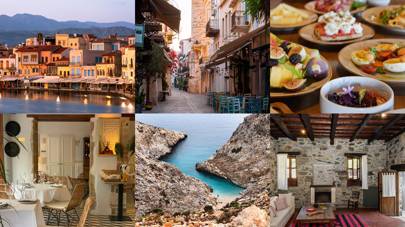 21. CHANIA,
21. CHANIA, 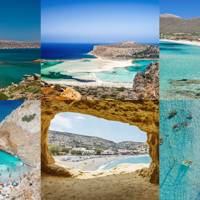
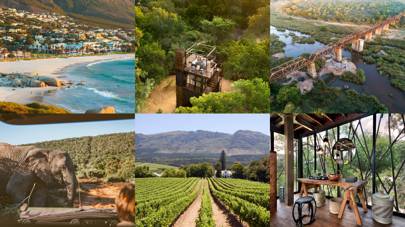 20. SOUTH AFRICACool creatives are at the forefront of a cultural renaissanceLike many countries,
20. SOUTH AFRICACool creatives are at the forefront of a cultural renaissanceLike many countries, 
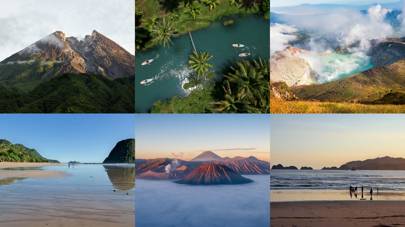 19. PULAU MERAH, JAVA, INDONESIAA remote, still-under-the-radar surf hubThis corner of
19. PULAU MERAH, JAVA, INDONESIAA remote, still-under-the-radar surf hubThis corner of 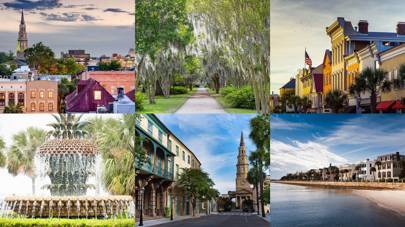 18. CHARLESTON, USAThe historic city has a much-needed reckoning with its pastWith its eccentric old-world image and haunting blackwater cypress swamps,
18. CHARLESTON, USAThe historic city has a much-needed reckoning with its pastWith its eccentric old-world image and haunting blackwater cypress swamps, 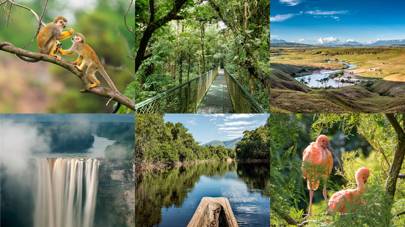 17. GUYANAPaving the way for indigenous-led conservationAlthough it’s
17. GUYANAPaving the way for indigenous-led conservationAlthough it’s 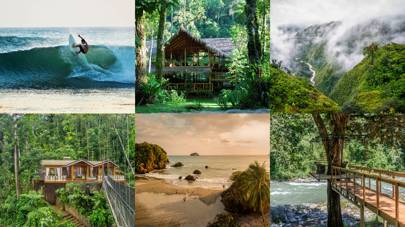 16. COSTA RICASustainability reigns supreme in the eco-travel power playerFilled with misty cloud forests, belching volcanoes and surf-pummelled beaches,
16. COSTA RICASustainability reigns supreme in the eco-travel power playerFilled with misty cloud forests, belching volcanoes and surf-pummelled beaches,  15. SHETLAND, SCOTLAND, UKThe far-flung archipelago makes its mark as a foodie hotspotFloating in the whale-filled waters between the northern extremities of
15. SHETLAND, SCOTLAND, UKThe far-flung archipelago makes its mark as a foodie hotspotFloating in the whale-filled waters between the northern extremities of 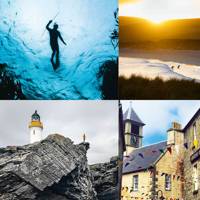
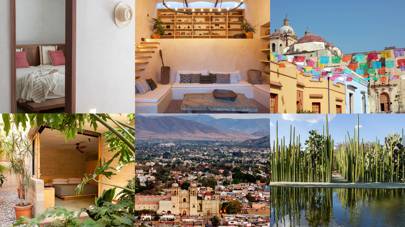 14. OAXACA CITY, MEXICOThe history-steeped town is more intriguing than ever
14. OAXACA CITY, MEXICOThe history-steeped town is more intriguing than ever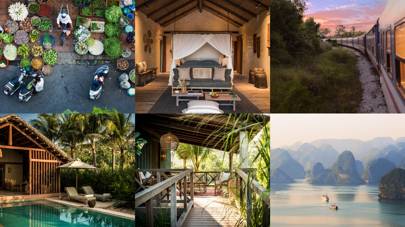 13. VIETNAMHot hotel openings abound in the South-east Asian sanctuaryIn the coastal enclave of Bãi San Hô, overlooking a near-deserted sweep of pearly sand, you’ll find the much-awaited new property from forward-thinking Zannier Hotels. Spearheading a flurry of hot arrivals in
13. VIETNAMHot hotel openings abound in the South-east Asian sanctuaryIn the coastal enclave of Bãi San Hô, overlooking a near-deserted sweep of pearly sand, you’ll find the much-awaited new property from forward-thinking Zannier Hotels. Spearheading a flurry of hot arrivals in 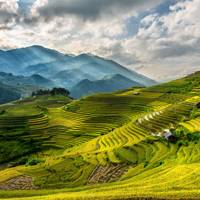
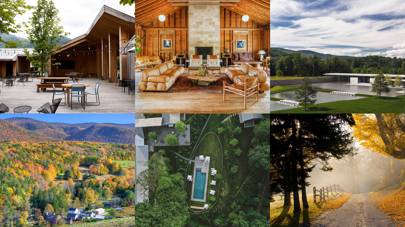 12. THE BERKSHIRES, USAThe low-key Hamptons alternative comes into its ownThe Berkshires might not have the flashy allure of the Hamptons, but this once down-on-its-luck corner has been slowly reinventing itself, emerging as an arty refuge for creatives from the busy surrounding cities. Thundering across Massachusetts’ undulating western stretches, the mountainous region – a three-hour drive from
12. THE BERKSHIRES, USAThe low-key Hamptons alternative comes into its ownThe Berkshires might not have the flashy allure of the Hamptons, but this once down-on-its-luck corner has been slowly reinventing itself, emerging as an arty refuge for creatives from the busy surrounding cities. Thundering across Massachusetts’ undulating western stretches, the mountainous region – a three-hour drive from 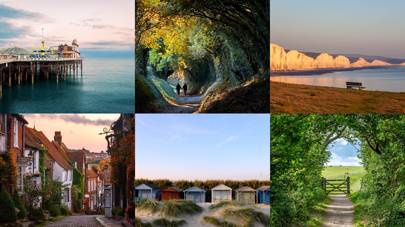 11. EAST AND WEST SUSSEX, ENGLAND, UKArty arrivals make the charming counties more alluring than ever
11. EAST AND WEST SUSSEX, ENGLAND, UKArty arrivals make the charming counties more alluring than ever
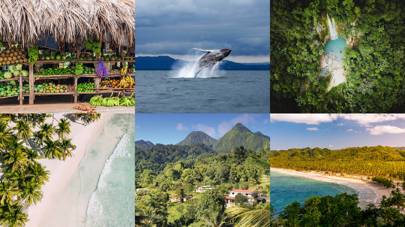 10. DOMINICAN REPUBLIC, CARIBBEANThe low-fi side to this Caribbean nationThe Dominican Republic might be known for the bombastic resorts that line Punta Cana on its eastern tip, but look again and there’s another slower, quieter side. Our attention was already piqued when
10. DOMINICAN REPUBLIC, CARIBBEANThe low-fi side to this Caribbean nationThe Dominican Republic might be known for the bombastic resorts that line Punta Cana on its eastern tip, but look again and there’s another slower, quieter side. Our attention was already piqued when 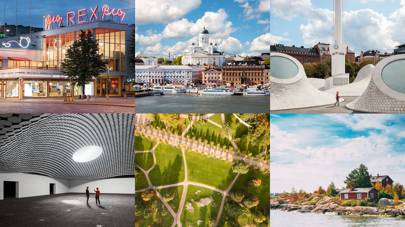 9. HELSINKI, FINLANDThe Scandi city emerges as a cultural hotspotForget the magnificent architecture and superb waterfront dining spots, if there’s one thing
9. HELSINKI, FINLANDThe Scandi city emerges as a cultural hotspotForget the magnificent architecture and superb waterfront dining spots, if there’s one thing  8. AMAZON RAINFORESTThe beautiful but beleaguered region needs the support of eco-conscious travellers more than everWith its flooded woodlands and riverways coiling like fat anacondas, the Amazon – which stretches across much of north-western Brazil and extends into
8. AMAZON RAINFORESTThe beautiful but beleaguered region needs the support of eco-conscious travellers more than everWith its flooded woodlands and riverways coiling like fat anacondas, the Amazon – which stretches across much of north-western Brazil and extends into 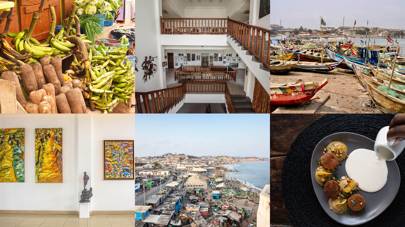 7. ACCRA, GHANAAfrica’s brightest city is shiningFew places on earth feel as energetic as Ghana right now, as its young creatives reimagine the country’s role on the global cultural scene. In the heady city of Accra, among the cool crowds and the burgeoning diaspora, there’s a growing sense of ownership of Ghanaian traditions when it comes to arts, music and fashion.
7. ACCRA, GHANAAfrica’s brightest city is shiningFew places on earth feel as energetic as Ghana right now, as its young creatives reimagine the country’s role on the global cultural scene. In the heady city of Accra, among the cool crowds and the burgeoning diaspora, there’s a growing sense of ownership of Ghanaian traditions when it comes to arts, music and fashion.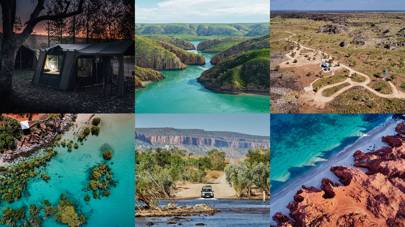 6. THE KIMBERLEY, AUSTRALIAAdventure travel on an epic scalePut frankly,
6. THE KIMBERLEY, AUSTRALIAAdventure travel on an epic scalePut frankly, 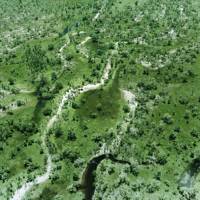 PHOTOGRAPHYThe most awe-inspiring photos of Australia
PHOTOGRAPHYThe most awe-inspiring photos of Australia 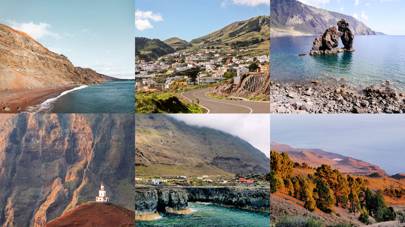 5. EL HIERRO, THE CANARY ISLANDSThe quiet Canary is singing louderShrugging off the archipelago’s unwarranted package-holiday reputation, the lesser-known
5. EL HIERRO, THE CANARY ISLANDSThe quiet Canary is singing louderShrugging off the archipelago’s unwarranted package-holiday reputation, the lesser-known 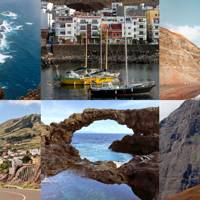 INSPIRATION
INSPIRATION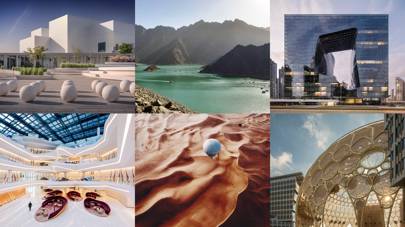 4. UNITED ARAB EMIRATESModernist minimalism takes root in the desertWhen it was announced that
4. UNITED ARAB EMIRATESModernist minimalism takes root in the desertWhen it was announced that 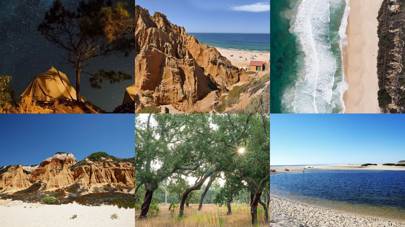 3. MELIDES, PORTUGALA hidden Portuguese beach spot emerging from under the radarWith pristine sands, tiny village squares and, well, very little else, Melides is
3. MELIDES, PORTUGALA hidden Portuguese beach spot emerging from under the radarWith pristine sands, tiny village squares and, well, very little else, Melides is 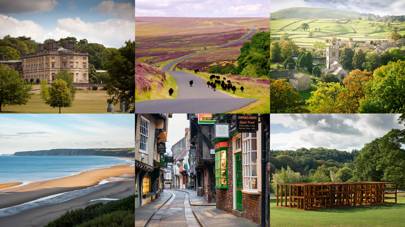 2. YORKSHIRE, ENGLAND, UKThe booming northern county bolsters its arty credentialsAs well as being a (rather large) land of brooding moors and moody coastlines,
2. YORKSHIRE, ENGLAND, UKThe booming northern county bolsters its arty credentialsAs well as being a (rather large) land of brooding moors and moody coastlines, 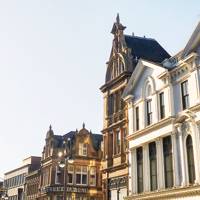 DESTINATIONSThe coolest places to visit in Yorkshire GETTY IMAGES / COURTESY OF YORKSHIRE SCULPTURE PARK BY JONTY WIL
DESTINATIONSThe coolest places to visit in Yorkshire GETTY IMAGES / COURTESY OF YORKSHIRE SCULPTURE PARK BY JONTY WIL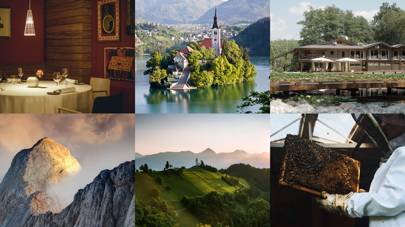 1. SLOVENIAMichelin-starred food and old-world wine make this an exciting up-and-comerIt’s somewhat mind-boggling that Slovenia – tucked between old favourites
1. SLOVENIAMichelin-starred food and old-world wine make this an exciting up-and-comerIt’s somewhat mind-boggling that Slovenia – tucked between old favourites 
























